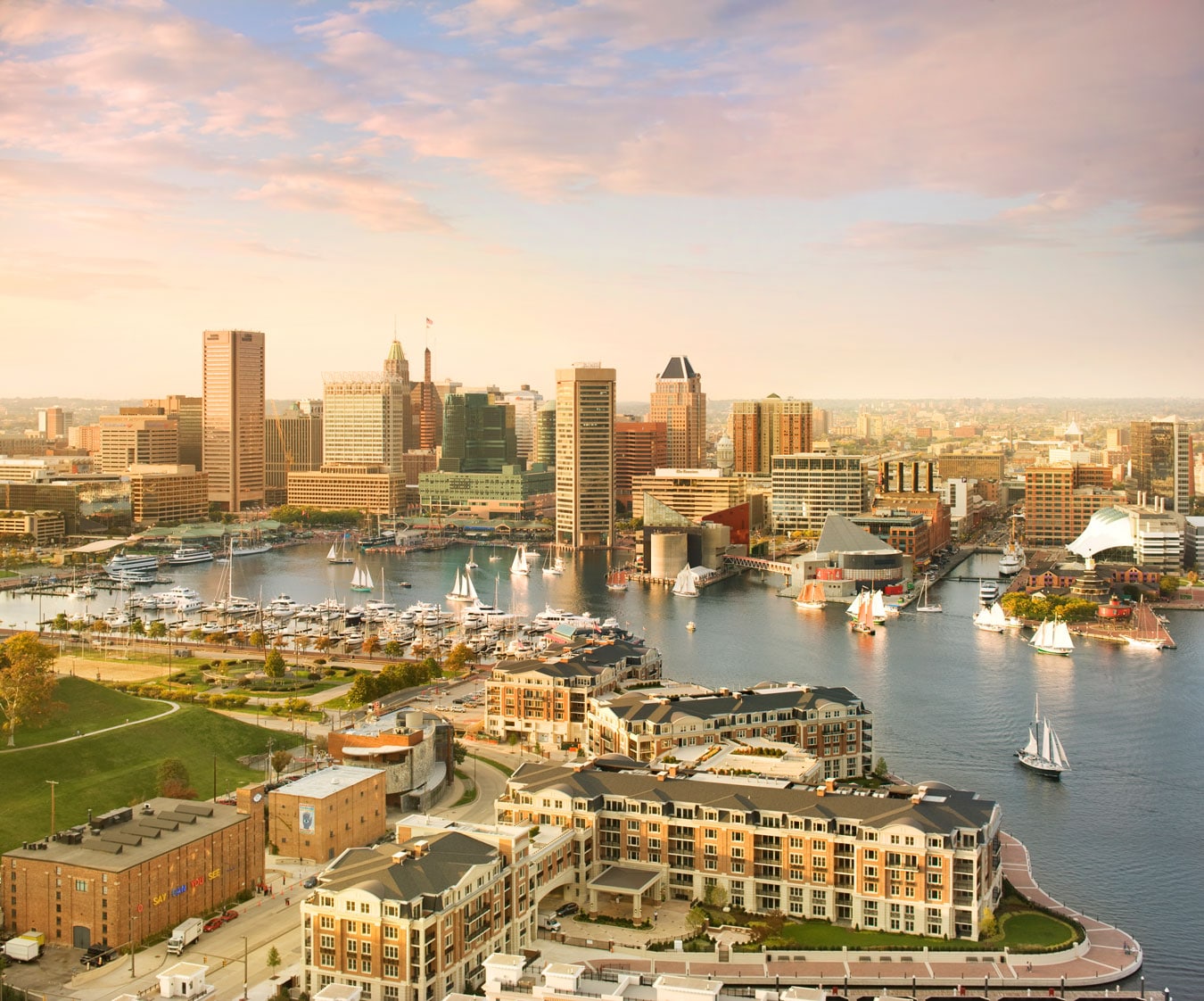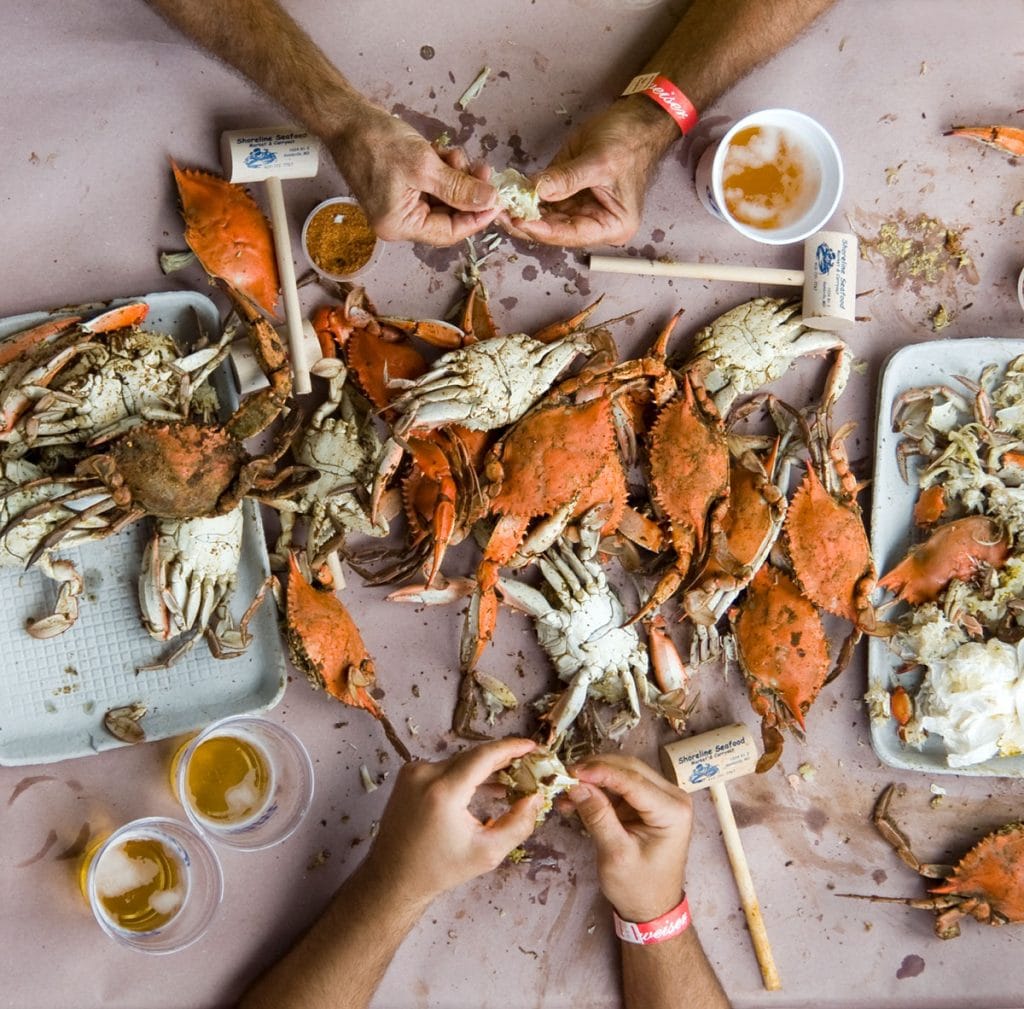
Nearly midway between Philadelphia, Pennsylvania and Washington D.C., Baltimore, Maryland is arguably one of the East Coast’s most underrated cities for people who love food. You might find that surprising. Particularly since Baltimore’s food history has been closely tied to processing and distribution since the city was founded back in 1729. The proximity to other East Coast locations and how it’s situated right in the harbor made it a key player in developing and distributing the wares of many food industries.
Today, Baltimore is a top foodie destination. It serves up a combination of historic neighborhoods, waterfront attractions, and bustling eateries, all of which contribute to the culinary buzz. Although diners undoubtedly get a thrill from sampling the modern take on Baltimore cuisine, to understand the heart of the city, you must try Baltimore’s three standout dishes: crab, pit beef, and Berger cookies.

ALL THINGS CRAB
In practically any Baltimore restaurant, crab will be among the top “catch of the day” menu options. I spent some time in the city last summer, exploring all that it has to offer. I discovered that the city is divided into two schools of thought when it comes to breaking down steamed whole crabs. Most of the city uses a mallet and good old-fashioned know-how to extricate the sweet, tender flesh. Residents of the Eastern Shore have a slightly less messy, more exacting technique using a knife. Depending on where I ate, I was faced with either option.
Whole crabs, crab cakes, soft crab sandwiches, fried crab, crab pasta, crab pizza — you name it, Baltimore crabifies it. I found crab chips and crab fries as sides. I went to brunch and had a crab eggs Benedict with a Bloody Mary studded with seasoning and accented with lump crab. Delicious.
Crab loving tourists can eat their weight in crab in this crab-obsessed city since this staple is so readily available. Baltimore’s location along the shores of the Chesapeake Bay place it in a prime location for this abundant food source. It turns out that Native Americans and early European settlers relied on crab as a food source, too. Historians have found evidence of crab as far back as the 13th century. One thing quickly became clear to me — the blue crabs caught from the Chesapeake Bay have starred on the plates and in the recipes of Baltimore residents for centuries.



PIT BEEF
The crab supply drops off as temperatures plummet. Restaurants and home cooks are forced to source their crab from states located along the southern shores of the Gulf of Mexico. The crabs that are so plentiful in the mighty Chesapeake tuck themselves in and go dormant for the winter months.
For winter visitors, that means branching out and enjoying some of the city’s other iconic dishes. Top of the must-try list? Pit beef. This dish is often referred to as Baltimore’s version of barbecue. Unlike Southern barbecue, it isn’t slow-cooked. Instead, it’s grilled over charcoal. Then, the top round roast gets sliced thin and piled high on a Kaiser roll and sauced with a little horseradish concoction.
Although no one is really sure how this dish evolved, the general consensus is that it was born in the working-class neighborhoods of the city’s East Side. In the 1970s, stands selling pit beef dotted the sides of Pulaski highway. And it has continued to thrive over the decades. You can try making it at home, but somehow it’s never quite as magical as what you’re served while you’re in the city that made it famous.


BERGER COOKIES
What would culinary exploration be without dessert? Snowballs and rainbow cake are a few of the iconic sweets the city is known for. But anyone serious about their treats can’t leave the city without sampling Baltimore’s answer to New York’s black and white cookie — Berger cookies.
"...soft, cakey shortbread cookie slathered in rich, fudge frosting and thoughts of all other cookies go out the window."
Anyone lucky enough to hit the Market Bakery in Lexington Market while the cookies are baking can attest to the almost waffle-like aroma that fills the air. Sold already packaged in several locations throughout the city, this is the one spot left where hungry consumers can buy the infamous cookies while they’re still warm. One bite of this soft, cakey shortbread cookie slathered in rich, fudge frosting and thoughts of all other cookies go out the window.
The cookies date back to 1835 when founder Henry Berger, a baker and German immigrant, settled in the United States and opened an East Baltimore bakery. Later, his son Henry took the reins at his dad’s bakery, and his two brothers operated stalls in open-air markets across the city. The recipe for these cookies has endured for centuries. Smithsonian Magazine calls it “Baltimore’s gift to the world of chocolate.” Visitors often scour websites like King Arthur Flour in search of recipes close enough to the real thing to feel like they’re an honorary Berger to try at home because these cookies are really that delicious.
Related Articles
-
 Travel & Culture March 16, 2020 | 6 min read Significance of Sustenance: Burlington I grew up in the shadow of the slopes in the Pocono Mountains, but the icy Pennsylvania conditions made skiing decidedly unfun for fall-prone little-ol’ me.
Travel & Culture March 16, 2020 | 6 min read Significance of Sustenance: Burlington I grew up in the shadow of the slopes in the Pocono Mountains, but the icy Pennsylvania conditions made skiing decidedly unfun for fall-prone little-ol’ me. -
 Travel & Culture April 02, 2020 | 8 min read A Brooklyn Pizzeria Fights Through COVID-19 COVID-19 hit the city like a slow-moving hurricane. We knew it was coming, but we were still in shock. Everything was uncertain.
Travel & Culture April 02, 2020 | 8 min read A Brooklyn Pizzeria Fights Through COVID-19 COVID-19 hit the city like a slow-moving hurricane. We knew it was coming, but we were still in shock. Everything was uncertain. -
 Travel & Culture June 23, 2020 | 6 min read Distinctive Process: Maori Hangi Steaming geothermal pools set against a vivid blue sky, in the middle of lush natural surroundings and a day spent soaking up indigenous Maori culture.
Travel & Culture June 23, 2020 | 6 min read Distinctive Process: Maori Hangi Steaming geothermal pools set against a vivid blue sky, in the middle of lush natural surroundings and a day spent soaking up indigenous Maori culture.